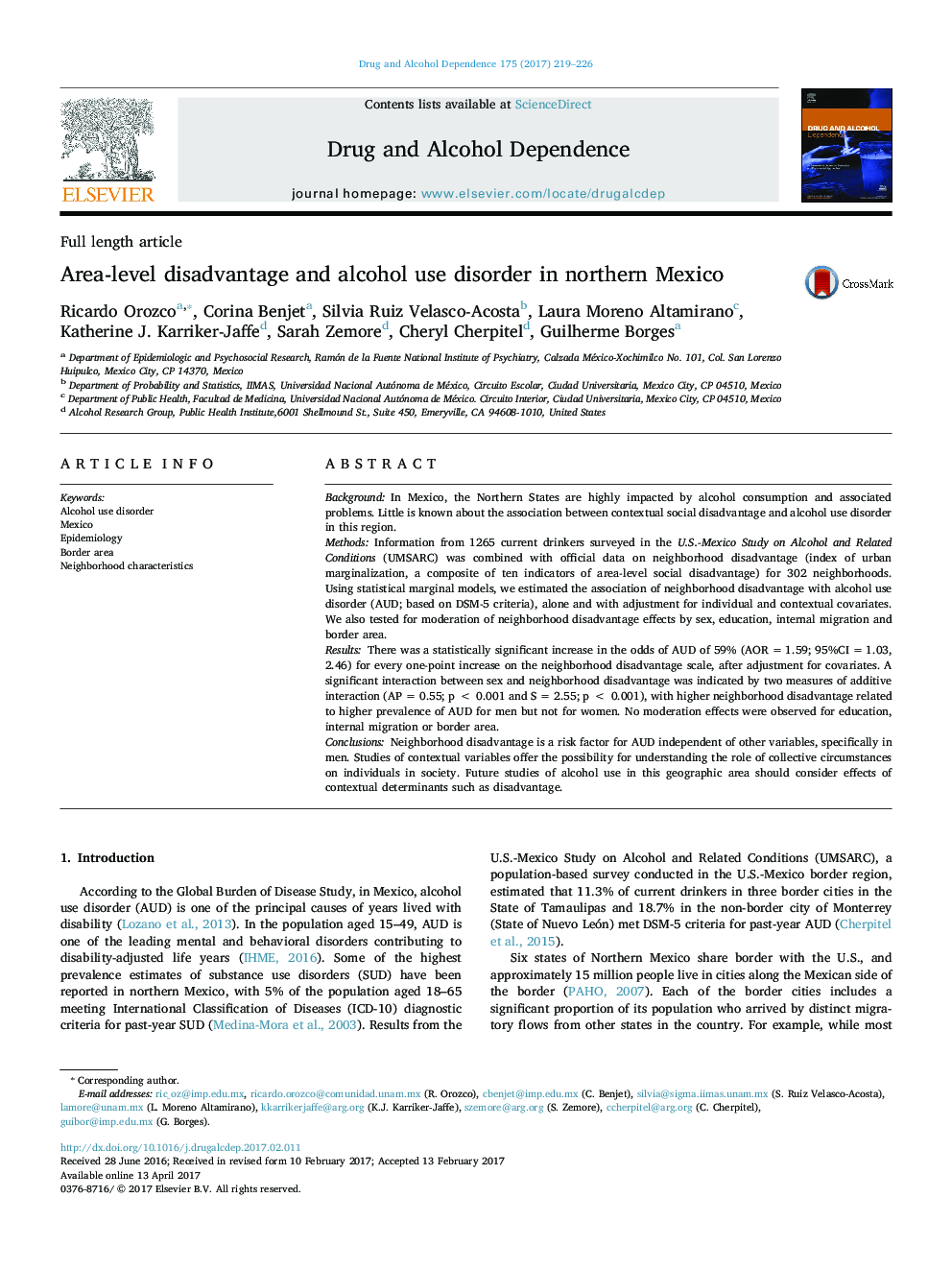| Article ID | Journal | Published Year | Pages | File Type |
|---|---|---|---|---|
| 5120088 | Drug and Alcohol Dependence | 2017 | 8 Pages |
â¢Higher neighborhood disadvantage is related to higher DSM-5 alcohol use disorder (AUD) prevalence.â¢This association is moderated by sex.â¢Financial hardship is related to AUD after adjusting for neighborhood disadvantage.
BackgroundIn Mexico, the Northern States are highly impacted by alcohol consumption and associated problems. Little is known about the association between contextual social disadvantage and alcohol use disorder in this region.MethodsInformation from 1265 current drinkers surveyed in the U.S.-Mexico Study on Alcohol and Related Conditions (UMSARC) was combined with official data on neighborhood disadvantage (index of urban marginalization, a composite of ten indicators of area-level social disadvantage) for 302 neighborhoods. Using statistical marginal models, we estimated the association of neighborhood disadvantage with alcohol use disorder (AUD; based on DSM-5 criteria), alone and with adjustment for individual and contextual covariates. We also tested for moderation of neighborhood disadvantage effects by sex, education, internal migration and border area.ResultsThere was a statistically significant increase in the odds of AUD of 59% (AOR = 1.59; 95%CI = 1.03, 2.46) for every one-point increase on the neighborhood disadvantage scale, after adjustment for covariates. A significant interaction between sex and neighborhood disadvantage was indicated by two measures of additive interaction (AP = 0.55; p < 0.001 and S = 2.55; p < 0.001), with higher neighborhood disadvantage related to higher prevalence of AUD for men but not for women. No moderation effects were observed for education, internal migration or border area.ConclusionsNeighborhood disadvantage is a risk factor for AUD independent of other variables, specifically in men. Studies of contextual variables offer the possibility for understanding the role of collective circumstances on individuals in society. Future studies of alcohol use in this geographic area should consider effects of contextual determinants such as disadvantage.
